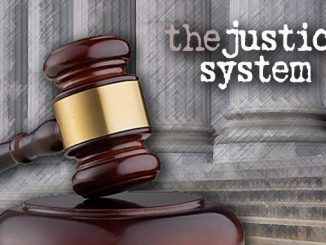
Despite multiple major health woes, Supreme Court Justice Ruth Bader Ginsberg, refuses to retire.
By S.T. Patrick
The continued failing health of Supreme Court Justice Ruth Bader Ginsberg has created what magazine Vanity Fair called an “R.B.G. Deathwatch” within the Trump administration. While the administration is cautiously avoiding being portrayed as morbid or opportunistic, feelers have been sent out to conservative activists to test the waters for potential Supreme Court nominees.
Ginsberg, 86, has served on the Supreme Court since her appointment by President Bill Clinton in 1993. Of the current court, only Justice Clarence Thomas has served longer than Ginsberg. Americans now used to contentious confirmation hearings may forget that Ginsberg was approved by a 96-3 vote of the Senate. That is the largest margin of approval on this current court, seconded only by Clinton’s other nominee, Stephen Breyer, who was confirmed 87-9. Ginsberg’s confirmation hearings affected the way nominees now answer questions. She refused to answer certain specific questions from senators, circumventing getting painted into an ideological corner and refusing to pass political litmus tests. This refusal, invoked also by Justice John Roberts, is now called the “Ginsberg precedent.”

Ginsberg, however, has been in failing health from the earliest years of her tenure. In 1999, she was diagnosed with colon cancer. In 2009, she was diagnosed again with cancer, this time an early stage tumor in her pancreas. In the last decade, she has experienced hospitalization due to iron deficiency, she had a stent placed in her right coronary artery, she fractured three ribs in a fall, and she’s undergone a left-lung lobectomy to remove even more cancerous nodules. Last month, Ginsberg completed multiple sessions of focused radiology to destroy a tumor found, again, in her pancreas.
The first calls for Ginsberg to retire came, surprisingly, from Democrats during the Obama administration. Progressive legal activists urged her to retire while Obama was in office and the Democrats firmly controlled the Senate so that a younger, like-minded justice could be inserted in her place. Ginsberg refused.
In 2016, Ginsberg broke ranks with court tradition and violated the non-binding Code of Conduct for United States Justices by speaking out publicly about an ongoing presidential campaign. She told The New York Times, “I can’t imagine what this place would be—I can’t imagine what the country would be—with Donald Trump as our president.” She then joked that if Trump won, it would be time to relocate to New Zealand. Trump responded in a typically forceful tweet, “Justice Ginsburg of the U.S. Supreme Court has embarrassed all by making very dumb political statements about me. Her mind is shot—resign!” The next day, he tweeted, “Is Supreme Court Justice Ruth Bader Ginsburg going to apologize to me for her misconduct? Big mistake by an incompetent judge!”
Trump may now have to replace her in what could be his third Supreme Court nomination. (This includes Justices Neil Gorsuch and Brett Kavanaugh, both of whom Ginsberg has publicly described as “very decent and very smart.”) During the 2016 campaign, Trump stated that either he or Hillary Clinton would potentially have to replace up to five Supreme Court justices. News website “Axios” recently reported on a source who had spoken with Trump about the Supreme Court. It appears that the president believes that Sonia Sotomayor (65, appointed by President Barack Obama in 2009) will retire early. The source for the “Axios” story reported Trump’s reasoning as was told to him: “Her health,” Trump said. “No good. Diabetes.” Sotomayor has struggled with a lifelong case of Type 1 diabetes. Regarding Ginsberg, Trump is reported to have asked, “What does she weigh? 60 pounds?”
 As it stands now, the makeup of the Supreme Court should dictate that it is more conservative than it has ruled. That comes as no surprise to legal analysts and professional court-watchers. In a USA Today opinion piece, Ilya Shapiro noted, “There were 67 decisions after argument in the term that ended in June. In those cases, the four justices appointed by Democratic presidents voted the same way 51 times, while the five Republican appointees held tight 37 times. And of the 20 cases where the court split 5-4, only seven had the ‘expected’ ideological divide of conservatives over liberals. By the end of the term, each conservative justice had joined the liberals as the deciding vote at least once.” This isn’t new. This trend traces back at least 10 years. Therefore, any knee-jerk fearmongering that warns of the impending death of justice as the bench becomes more conservative is highly exaggerated.
As it stands now, the makeup of the Supreme Court should dictate that it is more conservative than it has ruled. That comes as no surprise to legal analysts and professional court-watchers. In a USA Today opinion piece, Ilya Shapiro noted, “There were 67 decisions after argument in the term that ended in June. In those cases, the four justices appointed by Democratic presidents voted the same way 51 times, while the five Republican appointees held tight 37 times. And of the 20 cases where the court split 5-4, only seven had the ‘expected’ ideological divide of conservatives over liberals. By the end of the term, each conservative justice had joined the liberals as the deciding vote at least once.” This isn’t new. This trend traces back at least 10 years. Therefore, any knee-jerk fearmongering that warns of the impending death of justice as the bench becomes more conservative is highly exaggerated.
The Trump administration is looking, it is vetting, and it is wisely taking advice from activists across the country. They are expecting that there will come a time when a decision must be made—a decision that Ginsberg seems determined not to allow.
In a recent interview with National Public Radio, Ginsberg said, “I am very much alive.” But if 2020 buys Trump four more years on Pennsylvania Avenue, everything could change, and the leverage in this judicial war of attrition would reside in the Oval Office.
S.T. Patrick holds degrees in both journalism and social studies education. He spent 10 years as an educator and now hosts the “Midnight Writer News Show.” His email is [email protected]. He is also an occasional contributor to TBR history magazine and the current managing editor of Deep Truth Journal (DTJ), a new conspiracy-focused publication available from the AFP Online Store.




